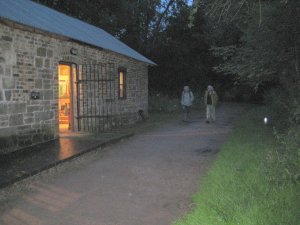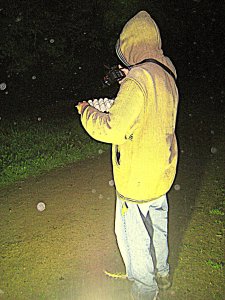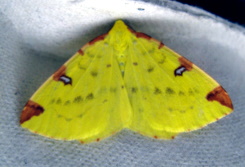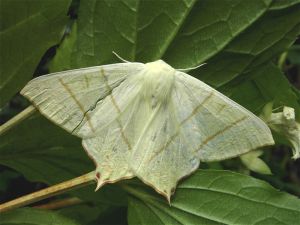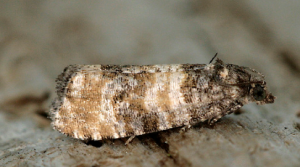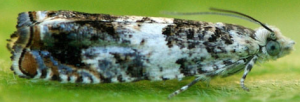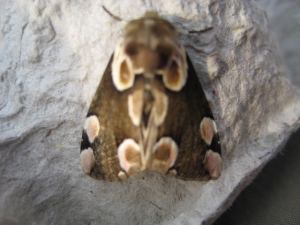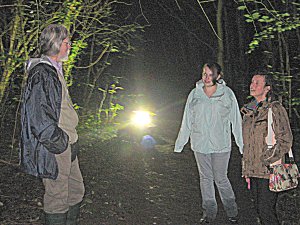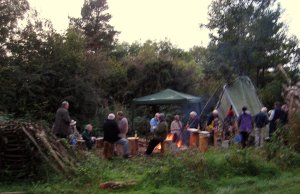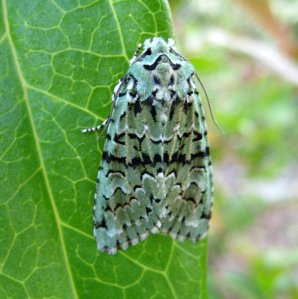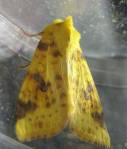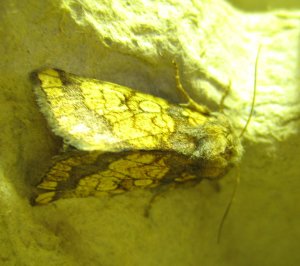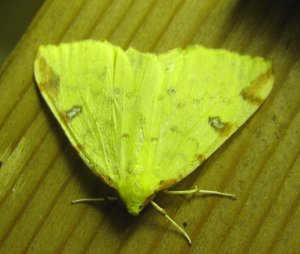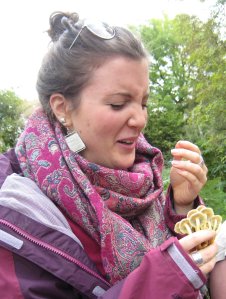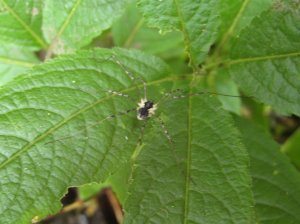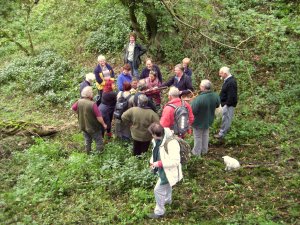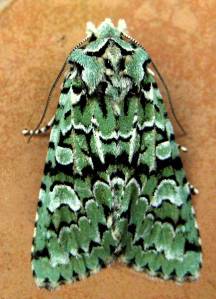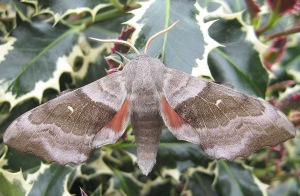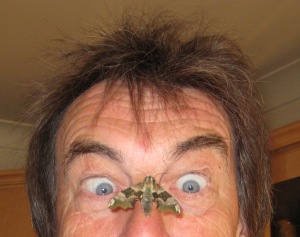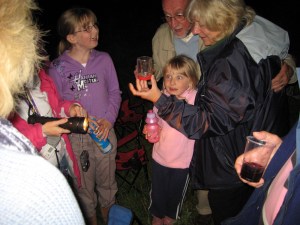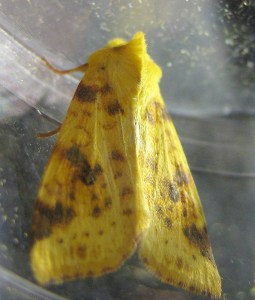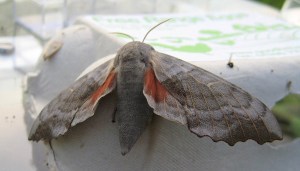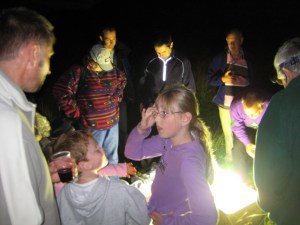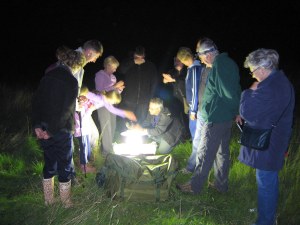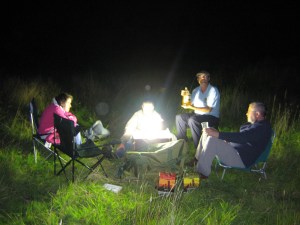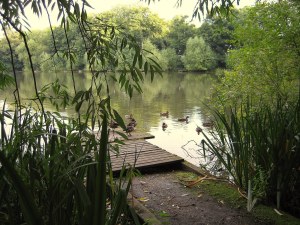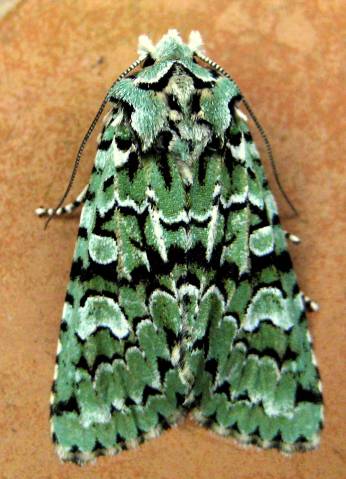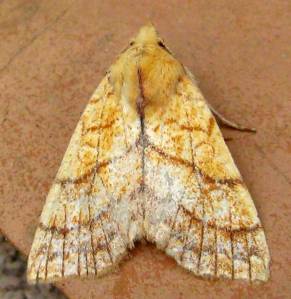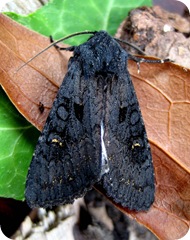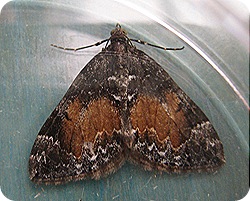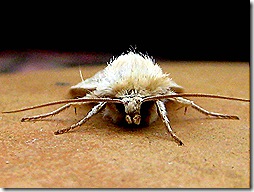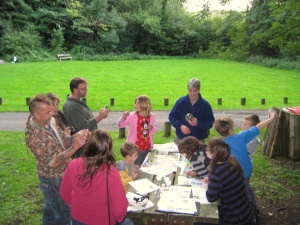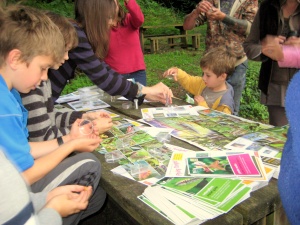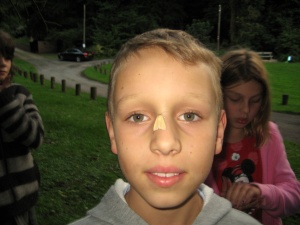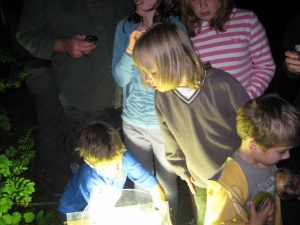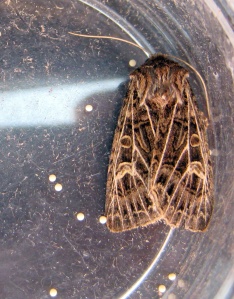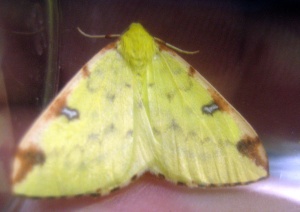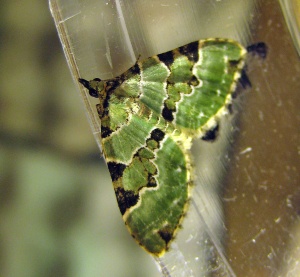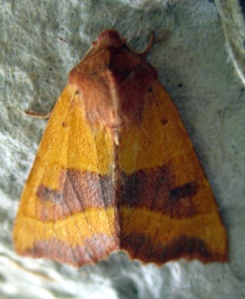It’s July 12th, 2012 and along with County Butterfly and Moth Recorder, Tony Jacques, I was asked by Dr Gareth Parry – Community Biodiversity Project Officer for Shropshire Council to present a Moth Identification Session to help and inspire newcomers to our beautiful, mostly nocturnal, insects. Following that we then ran a live moth-trapping session which members of the public were invited to help pot-up, identify and record all the moths that came into the 4 traps we operated between 9pm and midnight.
This was Gareth collecting eggs from the Heritage Centre resident hens and blowing bubbles at the same time! Actually, that’s rain on the camera lens and the egg boxes are used in the traps for the moths to settle down in but I just couldn’t resist it!
The evening proved to be a little damp with intermittent but mainly light showers which fortunately didn’t have a particularly adverse effect on our moth count – in fact many species seemed to be enjoying the damp, rather humid, conditions and some interesting results transpired.
For example between us we recorded 3 of this lovely woodland species – Aethes rubigana – the larvae of which feed on the seeds of Burdock. Although designated ‘common’ in England and Wales it was the first time I had seen it – so that’s a first for me!
The top two macro’s (larger moths) of the night represented 2 of the most colourful and delicate that appear this time of year. Both belonging to the group known as Geometrids.
We had 39 x Brimstone moth
And 13 x Swallow-tailed Moth
Another first for me was this Muslin Footman which turned up in Tony’s Robinson trap
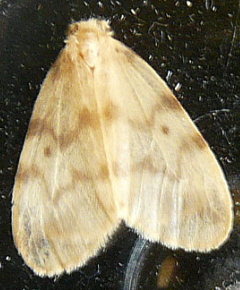
The top Ten macros and micros for the night were:-
Brimstone Moth
Garden Grass-veneer (micro)
Dipleurina lacustrata (micro)
Swallow-tailed Moth
Riband Wave [non-banded form]
Large Yellow Underwing
July Highflyer
Heart and Dart
Double Square-spot
Agapeta hamana (micro)
One of the uncommon micros found in Shropshire was Piniphila bifasciana of which there are only around 12 records for the county since records began 150 years ago.
There are a similar number for another micro found on the night:-
Epinotia subocellana
All in all we identified a total of 259 individuals across 62 species which was quite a good result and endemic to the wonderful mixed habitat found around the Llanymynech Heritage Centre where I must give a special thanks to Joan Zorn for organising the Stables for the presentation and laying on tea and biscuits (or were the biscuits Gareth’s?).
As we were wrapping up at just before midnight I was running the final counts in my Skinner trap with its 125w Mercury Vapour lamp and discovered this beautiful moth resting in an egg box cell
The Peach Blossom larvae feed on bramble so the moth is most likely to be found wherever there are good supplies of its foodplant but the adult particularly likes light woodland and once again the Llanymynech Heritage Area fits the bill perfectly.
All things considered the results were widely varied across species giving us quite a diverse species count – so a successful night in which we hope the small nucleus of people who turned up for both the presentation and the moth-trapping also found the event of great interest.
If you would like a full list of the moths we recorded please click the link below to download the Excel file. Click on any of the Code Numbers in the first column and it will display a picture and short bio of that particular moth.
Thanks to all who helped to organise the event and a special thanks to all who turned up on a somewhat wet night to witness the spectacle that I know as ‘The Magic of Moths’
Paul Watts

